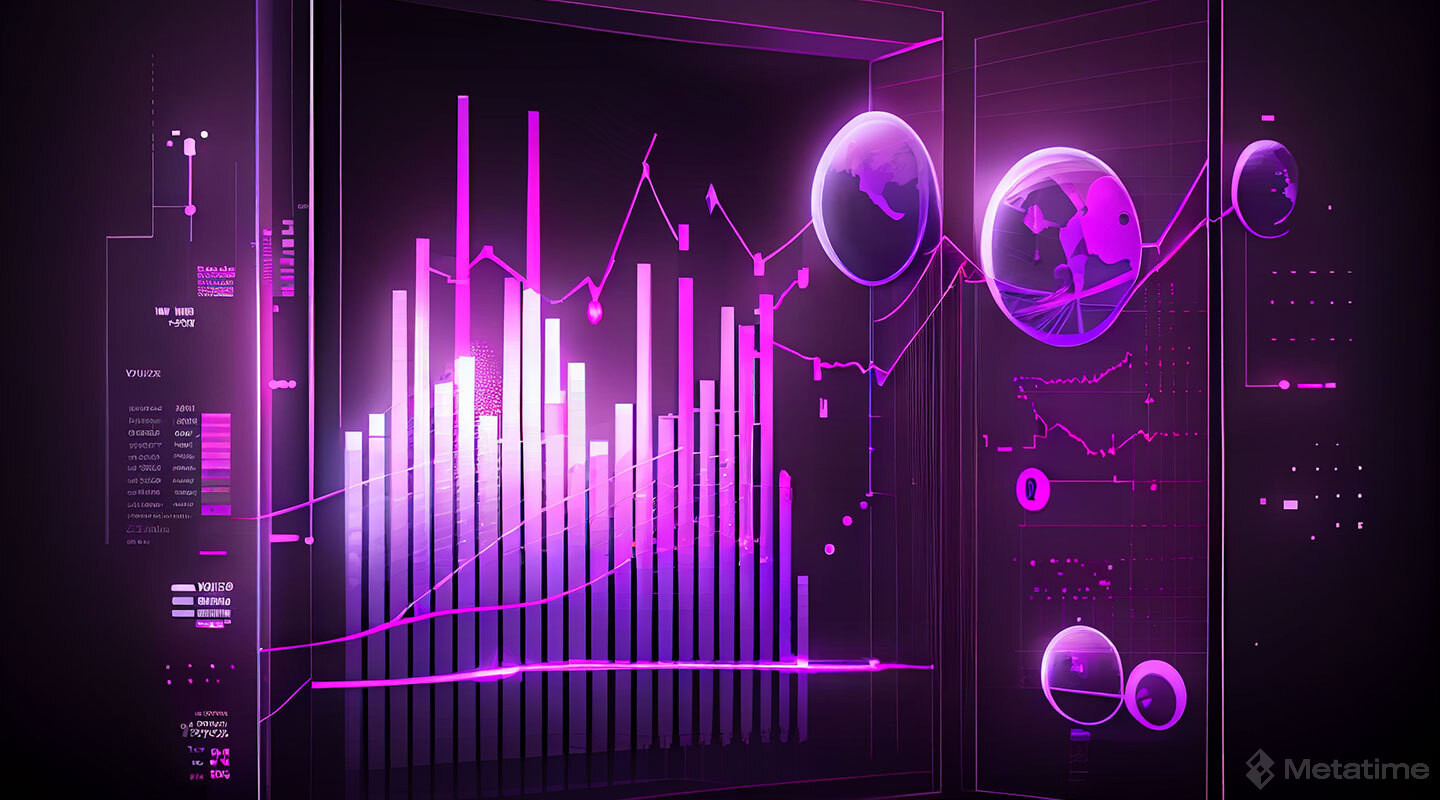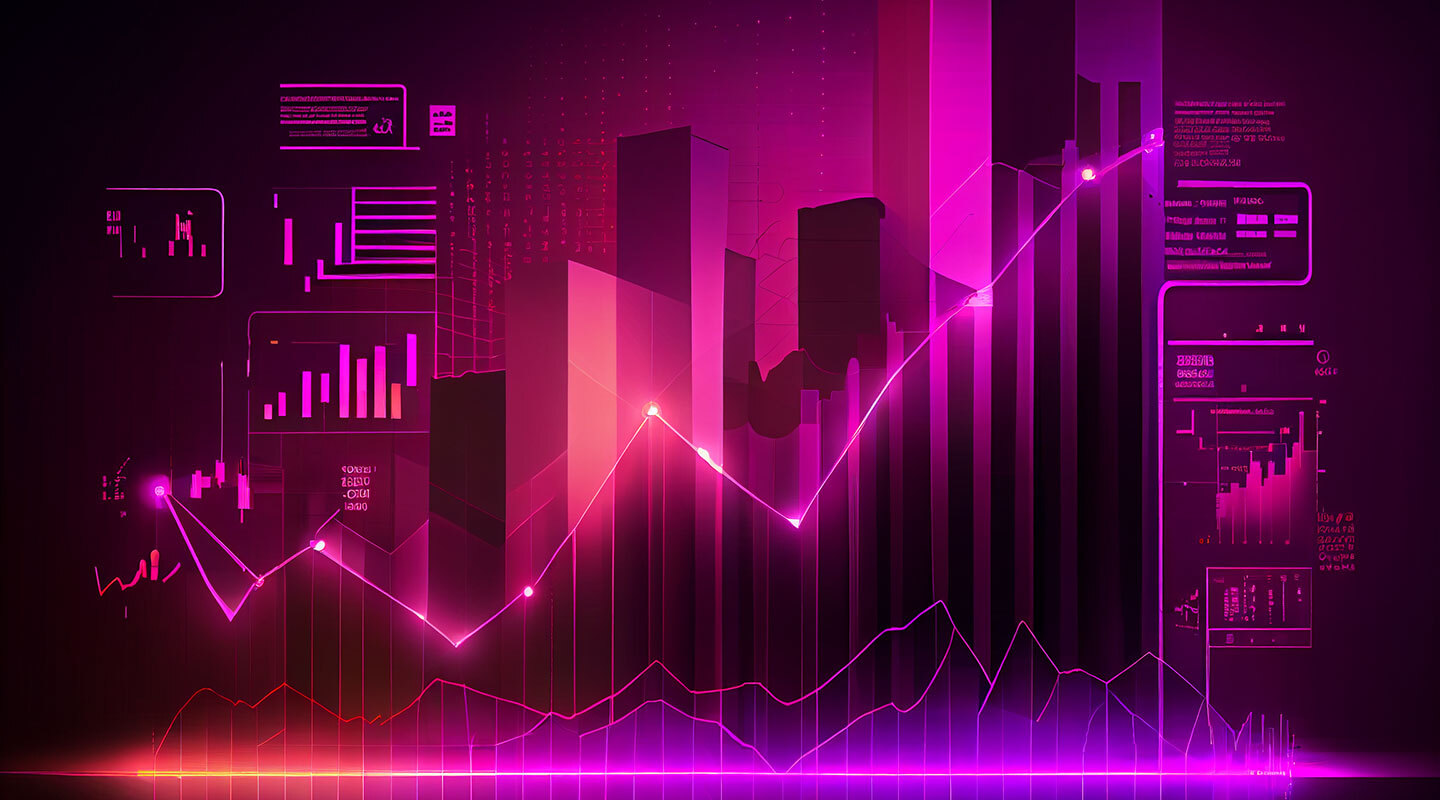Uncertainties caused by economic developments, political factors or unforeseen events may cause volatility in the prices of financial instruments. In such cases, changes in the price of financial instruments allow the risk of that instrument to be estimated.
Volatility represents a statistical measure of the dispersion of returns on a financial instrument or market index. In other words, volatility is measured as the standard deviation between the returns on a financial instrument or market index. Volatility is a measure of the speed and degree of change in the price of an asset. It measures how long the change in the asset's price occurs and how much the difference between the asset's price movements is. An asset with high volatility can be considered high risk, while an asset with low volatility can be considered low risk.
The volatility of an asset is a fundamental element of its pricing. Volatility, which describes how quickly and widely the asset's price changes, is calculated as the standard deviations in annual profit over a given period of time. Volatility in the prices of financial instruments is associated with large swings in both directions. Volatility measures all changes in either upward or downward direction.
How to Calculate Volatility?
Volatility refers to the changes that take place at a given point in time. It is calculated using the standard deviation and variance. The square root of the variance is the standard deviation. The mathematical process of standard deviation is used to calculate volatility.
To calculate volatility, these steps are followed:
- The prices of the financial instrument in a certain period are summed.
- The prices are averaged.
- Finding the difference between the price in the specified period and the average price means calculating standard deviations.
- The square root of the calculated standard deviation is taken and summed.
- Divide the result by the number of days in the specified period interval and calculate the standard deviation.
In periods of low market volatility, the volatility value starts to decrease. In periods of high market volatility, volatility is higher than normal.

What Are the Types of Volatility?
Volatility types are divided into two:
- Anticipated (Implied) Volatility
- Historical (Statistical) Volatility
What Is Anticipated (Implied) Volatility?
Anticipated (Implied) volatility is considered to be an important metric for options traders. Implied volatility is of great importance for options trading. At the same time, implied volatility allows one to predict how volatile the market will be. For traders, it provides a way to calculate probabilities and shows the volatility expectation. Traders cannot use projected volatility as an indicator of future volatility.
What Is Historical (Statistical) Volatility?
Historical (statistical) volatility measures price changes and fluctuations of financial instruments over a predetermined period of time. If there is an increase in historical volatility, the price of the financial instrument starts to move more. Historical volatility is calculated in increments ranging from 10 to 180 trading days, depending on the time set in options trading.
What Is Volatility and Option Pricing?
In the option pricing model, volatility estimates the extent to which the underlying asset's profit will fluctuate between now and when the option expires. It is also defined as a percentage coefficient and consists of day trading. Volatility can also be used to price option contracts using models such as the binomial tree. Assets with higher volatility translate into higher option returns. This is because volatility and the probability of profiting at option expiry are higher.
What Is the Volatility (VIX) Index?
The Volatility Index (VIX) measures the level of fear in the markets. The VIX is calculated through the Chicago Board Options Exchange (CBOE), which uses S&P 500 options contracts. The VIX is one of the parameters that investors watch carefully as it indicates the market's expectation. The VIX, the fear index, fluctuates between 0 and 20 and is usually higher during times of crisis when uncertainty is high.

What Is the Source of Volatility?
The main source of volatility is uncertainty. Uncertainties can be experienced in many sectors:
- Political factors
- Economic developments
- Unforeseen events
- Political Factors
Political developments such as elections or leader statements, monetary policies, international relations and trade agreements have an impact on prices.
Economic Developments
Changes in taxes, inflation, interest rates and the like cause markets to be volatile if prices do not meet expectations.
Unpredictable Events
Unpredictable events such as natural disasters or climate events have an impact on volatility. For example, if there is an unexpected climatic event in a hazelnut-producing region, hazelnut prices may suddenly increase.
What Is Volatility in Cryptocurrencies?
Volatility in the cryptocurrency market describes the stability of a cryptoasset at a given point in time. Cryptocurrencies are more volatile than other financial instruments. The reason why cryptocurrencies are more volatile is that they are digital and have a smaller market size than traditional markets. Thanks to the high volatility, investors have turned to cryptocurrency markets in order to earn high returns in short periods of time.
The growth of the cryptocurrency world has increased investors' interest in measuring volatility. This is why volatility indices have been created for cryptocurrencies. For instance, major cryptocurrencies like Bitcoin or Ethereum have their own volatility indices.
What Is Volatility Increase?
Volatility refers to the range in which a financial instrument can gain or lose value. A financial instrument with high volatility may have a high risk of sudden price changes. An asset with low volatility may have a low risk of sudden price changes. High fluctuations in markets cause volatility to increase. The higher the increase in volatility, the riskier the assets in the market. In order to protect assets, fluctuations need to be controlled. The increase in volatility puts all financial instruments at risk.

What Is Volatility Decline?
A decline in the value of assets creates instability. A low level of volatility allows investments in the market to gain value. The impact of volatility on the market is taken into account, as a volatility-related decline can suddenly increase.







